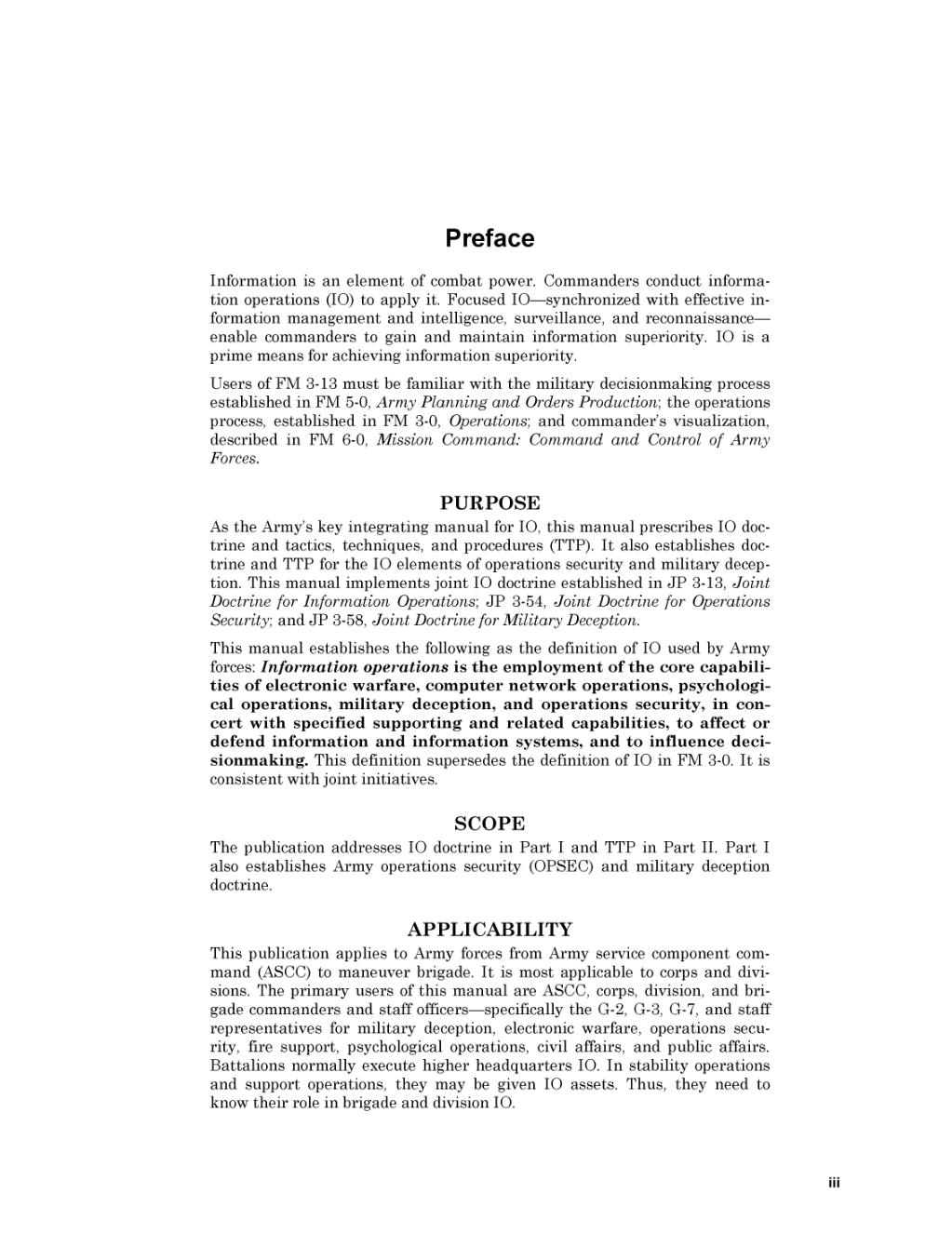Preface
Information is an element of combat power. Commanders conduct information operations (IO) to apply it. Focused IO—synchronized with effective information management and intelligence, surveillance, and reconnaissance— enable commanders to gain and maintain information superiority. IO is a prime means for achieving information superiority. Users of FM 3-13 must be familiar with the military decisionmaking process established in FM 5-0, Army Planning and Orders Production; the operations process, established in FM 3-0, Operations; and commander’s visualization, described in FM 6-0, Mission Command: Command and Control of Army Forces.
PURPOSE
As the Army’s key integrating manual for IO, this manual prescribes IO doctrine and tactics, techniques, and procedures (TTP). It also establishes doctrine and TTP for the IO elements of operations security and military deception. This manual implements joint IO doctrine established in JP 3-13, Joint Doctrine for Information Operations; JP 3-54, Joint Doctrine for Operations Security; and JP 3-58, Joint Doctrine for Military Deception. This manual establishes the following as the definition of IO used by Army forces: Information operations is the employment of the core capabilities of electronic warfare, computer network operations, psychological operations, military deception, and operations security, in concert with specified supporting and related capabilities, to affect or defend information and information systems, and to influence decisionmaking. This definition supersedes the definition of IO in FM 3-0. It is consistent with joint initiatives.
SCOPE
The publication addresses IO doctrine in Part I and TTP in Part II. Part I also establishes Army operations security (OPSEC) and military deception doctrine.
APPLICABILITY
This publication applies to Army forces from Army service component command (ASCC) to maneuver brigade. It is most applicable to corps and divisions. The primary users of this manual are ASCC, corps, division, and brigade commanders and staff officers—specifically the G-2, G-3, G-7, and staff representatives for military deception, electronic warfare, operations security, fire support, psychological operations, civil affairs, and public affairs. Battalions normally execute higher headquarters IO. In stability operations and support operations, they may be given IO assets. Thus, they need to know their role in brigade and division IO.
iii
